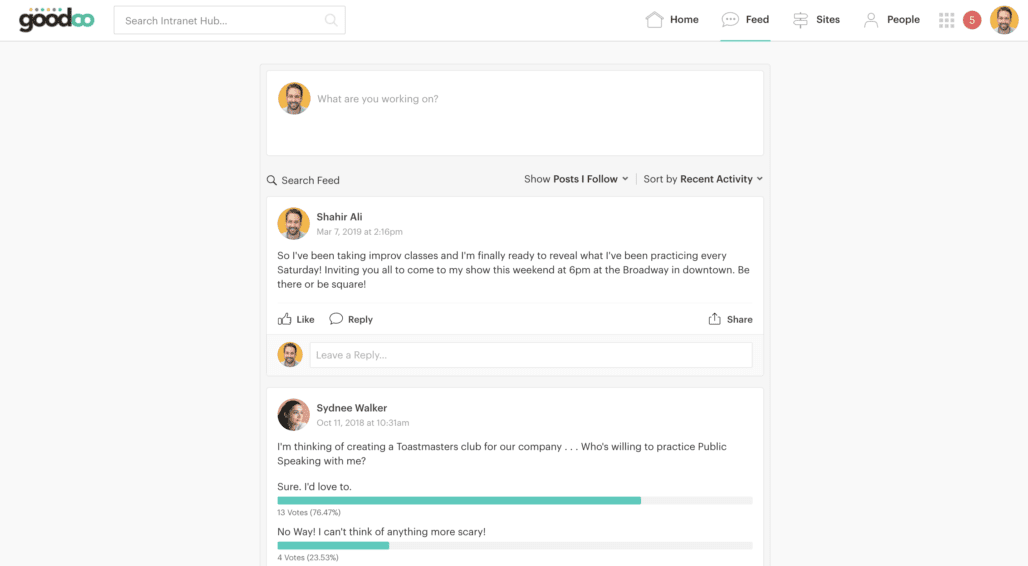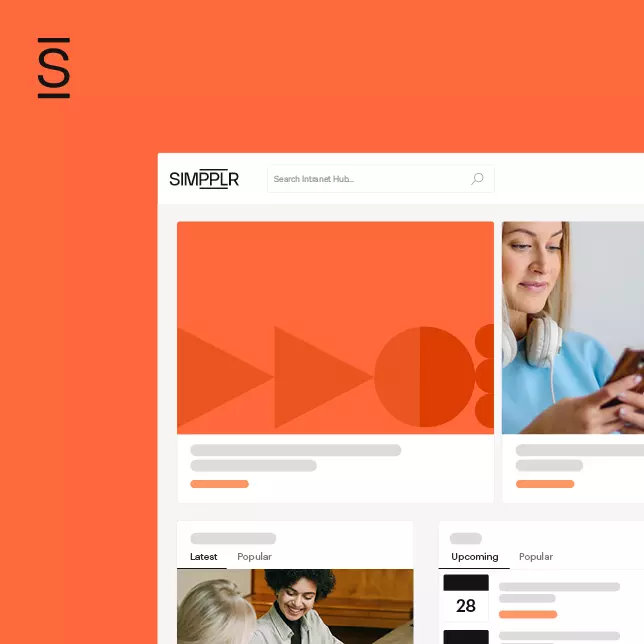The evolution and current state of the social intranet
We recently were asked to participate in an industry report to help define social intranets. First question: Is Simpplr a social intranet? Yes, absolutely. Second question: Does Simpplr consider itself part of the social intranet industry? This one is harder to grasp. On one hand, using the term “social intranet” comes with a lot of baggage. The industry has also changed considerably. On the other hand, good intranets are social intranets that understand how connecting a workforce with great company communications requires two-way communication and engagement. So let’s explore the evolution and current state of the social intranet.
Social is a thing of the past. So do you want social intranet software?
First off, there is the baggage that comes with the term “social” itself. Many feel the term social media is “so 2005”. Some people believe Facebook is evil. Others think that only their great aunts use it. So from a branding perspective, do modern intranets really want to align with this baggage?
Social intranet 1.0 failed
Here is another complication: Many social enterprise and collaboration companies that were considered trendsetters 10 years ago, either got swallowed up into obscurity or have struggled to stay afloat. The industry surfaced as a technology in search of a problem to solve. In the beginning, people saw that social media transformed our personal lives and therefore presumed if you build social into enterprise systems, then we would see the same transformation. But employees didn’t know how to use it. All they knew how to do was post the same memes and happy hour photos they would share on their personal networks at home. Soon management got mad and forced these platforms into becoming intranets. Thus the social intranet was born. Unfortunately, it started with an unsteady foundation.
Social in the workplace has changed
Today, there is an emerging separation between real-time team collaboration tools and interdepartmental social intranets. For example, teams are using Google Hangouts or Slack for real-time messaging and collaboration. Many would argue this is the new way of social collaboration in the workplace. But from an internal communications perspective, those channels get too noisy and aren’t curated for top-down communications. So they don’t replace the intranet use case. Incidentally, Simpplr has invested heavily in our Slack integration to more closely align these complementary use cases.

Social is an intranet feature – but a very important one
Social intranets are finally coming to terms with how to appropriately use social capabilities. It’s not that intranets are social that make them so powerful; it’s because intranets help everyone get on the same page, connect distributed workers, and make work clearer, easier, and more engaging. Social happens to be one of many important capabilities that makes that happen. That said, social intranet capabilities are really important. Social enables two-way feedback so leaders can understand if messaging is working, see what’s missing or unclear, and collect ideas and feedback. Social capabilities also make it easier to drive intranet adoption with an ongoing means to check-in on ever-changing, crowd-sourced content. And from an employee’s perspective, social intranets are great for getting help and finding experts when employees don’t know specifically where to ask.
What does the social intranet look like in 2019?
Going back to our original question: Does Simpplr consider itself part of the social intranet industry? Yes, we are a social intranet. But we choose to emphasize that we are a modern intranet over a social intranet. Upleveling the question, “what should an intranet look like in 2019?” Yes, it should be social. But it should also:
- Integrate other best-in-class cloud-based applications
- Get adopted
- Look like it was built for 2019
- Be easy to administer
- Connect employees
- Encourage leaders to participate
- Have a great search
- Help facilitate governance
- Be personalized. . . and so on.
So should a social intranet look like in today’s day and age? Watch our 3-minute demo and you’ll see a very social intranet and the many benefits it provides. But more importantly, you’ll also see a purpose-built intranet tries to make it easier to connect and align employees – not simply be social for social’s sake.














